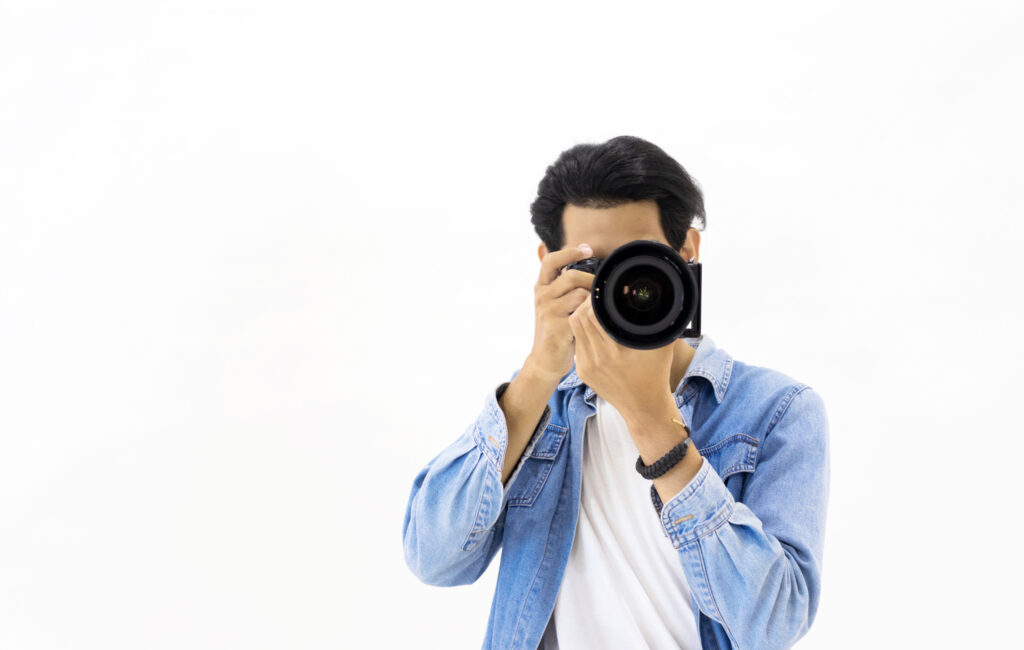What questions should I ask my wedding photographer?
Before hiring a wedding photographer, confirm their contingency plans for equipment failures or emergencies, ensuring they work with backup gear and secondary shooters. Request to view complete wedding galleries – not just portfolio highlights – to assess consistency in editing and coverage. Discuss their approach to balancing posed portraits with candid moments, and clarify ownership rights for RAW files if you anticipate needing future edits.
The most useful conversation with a photographer starts with listening. Before you talk about packages or timelines, ask how they learn a couple’s preferences and how they translate those preferences into a plan. A thoughtful professional will ask about the pace you want for the day, the people who matter most, and the moments you cannot imagine missing. They will repeat your priorities back to you in their own words, which tells you they have heard you and can carry that understanding into the work.
Style and approach deserve more than a quick glance. Portfolio reels show peak moments, but a complete gallery reveals how someone handles the ordinary parts of a wedding day. Invite them to walk you through a full wedding from morning to last song. Listen for how they balance guided portraits with natural coverage, how they decide when to step in and when to disappear into the room, and how they keep portraits efficient so you do not miss cocktail hour. There is no single right formula. What matters is whether their method matches the way you want the day to feel.
Lighting is the quiet backbone of good photography. Churches with stained glass, tents at twilight, and dance floors under colored LEDs can all change skin tones and flatten texture. Ask how they blend flash with ambient light, how they keep depth in dim spaces, and how they edit mixed lighting so people look like themselves. If your family includes a wide range of skin tones, invite them to explain exposure choices and color work in detail. You are not asking for brand names. You are asking how they protect everyone’s appearance with care.
Timelines protect energy and creativity. The best galleries often come from days that leave a little space to breathe. Ask how they build a schedule that includes buffers for travel, room resets, and weather shifts. If your ceremony time is fixed by the venue, explore options for portraits before the ceremony or at sunset. A photographer who thinks ahead will talk about where to place details, how to photograph them in context rather than on a table, and how to keep the plan flexible without losing momentum.
Family portraits are a place where planning pays off. The goal is a process that is efficient and kind, especially for elders and small children. Ask how they gather groups without chaos, where they place people for comfortable posing, and how many groupings they can complete within a set amount of time. Many professionals designate a family representative who knows faces and can call people in order while the photographer frames and cues. Small touches like a step stool for layering rows or a clear voice for directions can save twenty minutes and a great deal of stress.
Backups may not be glamorous, but they matter as much as any creative decision. The safest workflow begins in camera with dual card slots so every photo is written to two cards at the same time. During long receptions some photographers make an additional copy as an extra layer. Once they return to the studio, files move to two separate drives and a cloud or offsite copy. You do not need to recognize the hardware. You need to hear that redundancy is their default and that your images are protected from the first click to the last archive.
Second shooters and assistants can change what gets covered and how smoothly the day runs. A second shooter can document both partners getting ready, catch guest reactions during vows, and hold a wider angle on the ceremony while the lead stays tight on the couple. Ask who that person will be, how often they work together, and how the studio keeps the look consistent in editing. If the team draws from a rotating pool, it is reasonable to confirm that the lead photographer still handles culling and color so the gallery feels cohesive.
Presence is a practical skill. Some photographers are quiet observers who blend into the room and let moments unfold. Others use a steady voice during portraits so the group feels guided and at ease. Neither default is better on its own. What matters is whether you feel comfortable with their presence. Ask how they handle a camera shy partner, a relative who tries to direct the session, or an officiant who restricts movement during the ceremony. The stories they choose to share will show how they read a room and how they keep calm when plans shift.
Ceremony etiquette should be coordinated in advance. If you prefer an unplugged ceremony, your photographer should work with the officiant so the request feels warm rather than stern. If you love guest candids, ask how they move around phones without losing key angles. Preferences about flash, aisle access, and movement behind the altar must be discussed with respect for the venue and for the ritual. Professionals know how to honor both.
Post production shapes the way your memories will look for decades. Ask about their editing philosophy. Do they aim for color that is true to life. Do they retain natural skin texture. Do they convert certain frames to black and white when the mood reads more clearly without color. Numbers matter less than reasoning, but it is still helpful to hear a range for the total images you can expect for a wedding of your size and hours. You should also ask how they handle minor retouching and how they communicate about any requests that go beyond basic edits.
Delivery timelines should be specific and realistic. Many studios provide a small preview within a week so you have something to share with your families while excitement is fresh, followed by the full gallery in several weeks. Clarify how long the gallery will remain active, whether you will receive high resolution files for printing and web sized copies for easy sharing, and whether the gallery includes a simple print store for relatives who wish to order on their own.
Rights and usage deserve a direct conversation. You should know whether you may print wherever you like, whether there are restrictions on additional editing by third parties, and whether the photographer will request permission before submitting your wedding for publication. If privacy matters for your work or your family, raise it now. Most professionals are happy to limit public sharing or delay it until you have made your own announcements.
Albums and prints give digital files a home. Ask how they design albums, what materials they use, and how revisions work. Good design reads like a story. Wide scenes breathe, close details support, and the sequence carries you through the day without feeling crowded. If you are not ready to order right away, ask how long the option remains available and whether your files will be archived so you can return for an anniversary book without starting from zero.
Budget and terms should feel plain and predictable. Invite the photographer to walk through what is included, how additional hours are billed, and what happens if your schedule changes close to the date. Retainers, balance due dates, and rescheduling policies should be stated in clear language. Clarity protects both sides and helps you relax into the rest of the planning.
Experience at your venue can be helpful, but curiosity and preparation are often more important. Ask how they scout a new location. Do they arrive early to find clean backgrounds and shade. Do they note where the sun will set and identify a rain plan. The ability to read a space and find flattering light travels from a grand ballroom to a backyard tent and everywhere in between.
Since your celebration is near the coast, it is worth continuing that part of the discussion. Wind can lift a veil in a way that feels magical or it can tangle hair right as portraits begin. Salt mist can blur a lens within minutes. A prepared photographer will place people with the sun at their backs, use small diffusers to soften glare, and carry simple covers that protect cameras from spray. They will also check tide charts and traffic patterns, because timing near beaches often depends on more than the clock.
Traditions and culture deserve both respect and preparation. Ask whether they will speak with your officiant or a family elder before the day, and whether they study the sequence of events for your ceremony. When a photographer can describe a key moment before it happens, that is a sign they have done the homework that turns respect into strong coverage.
An engagement session can be more than a set of pictures. For many couples it functions as a rehearsal. You learn how the photographer directs and they learn how you respond to a camera. Together you build a shared vocabulary, which saves time during portraits on the wedding day and helps the images feel like you rather than a pose you have seen elsewhere.
Accessibility and comfort matter for guests as well as for the couple. If your family includes people who use mobility aids, ask how the photographer frames group portraits so everyone looks comfortable and seen. If your venue includes stairs or long walks, ask how they plan locations that minimize strain without sacrificing good light. Thoughtfulness in these areas shows up in the photos because people look at ease.
Chemistry is the thread that runs through all of these topics. You will spend many hours with this person on a day that carries a lot of emotion. If their presence helps you breathe and enjoy what is in front of you, your images will reflect that. The best sign at the end of a consultation is that you feel lighter than when you arrived. You know how to reserve the date, what will happen between booking and the wedding, and how they plan to work alongside your planner, your family, and your other vendors. You also know that if a curveball appears, they have seen it before and can solve it without drama.
In the end, the questions you bring to a photographer are not boxes to tick. They are the way you learn about craft, judgment, and care. When someone can speak clearly about timelines, lighting, family dynamics, backups, and rights, and when their full galleries show the same level of care, you gain the confidence to stop thinking about the camera and to live the moments you came to celebrate. That confidence is the real goal of every consultation, and it is the reason the conversation matters as much as the photographs themselves.


